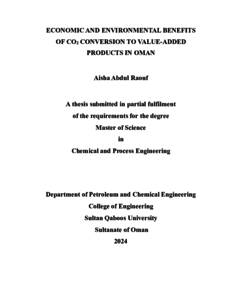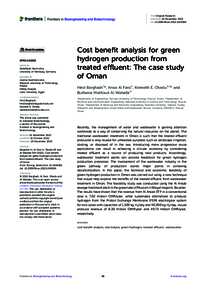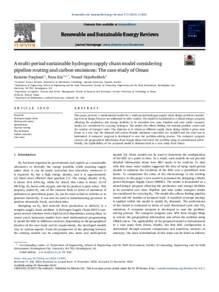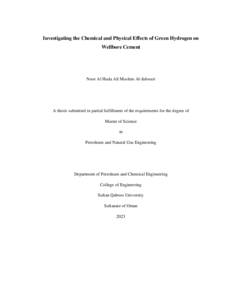وثيقة
Potential of underground hydrogen storage in Oman.
المعرف
DOI: 10.37934/araset.27.1.931
المصدر
Journal of Advanced Research in Applied Sciences and Engineering Technology. v. 27, 1, p. 9-31
المساهمون
Al-Rizeiqi, Nasser., مؤلف
Nabavi, Ali., مؤلف
الدولة
Malaysia
الناشر
Penerbit Akademia Baru.
ميلادي
2022-06-01
اللغة
الأنجليزية
الموضوع
الملخص الإنجليزي
Hydrogen can provide a viable source of energy that can covers the world’s energy requirement in the next coming years. One o f the major keys to wholly develop hydrogen energy is to provide a safe, cost efficient and compacted type of hydrogen storage. Geological reserves are considered a suitable space for hydrogen storage. In this research, we are trying to examine if there was any technical potential for hydrogen storage based on Oman’s geology by Identifying geological deposit in Oman that can be used for hydrogen storage and analyzing salt deposits for hydrogen storage suitability. By overviewing the possible underground hydrogen methods and based on Oman’s geology, deep aquifers were not suitabl e for hydrogen storage; due to the lack of large sedimentary basin, no experience for similar projects and the risks associated with surrounding environment. Depleted reservoir needs more study for deployment; there are no experiences of such projects for UHS. Salt basins are good candidate for underground storage; due to the large salt basin in Oman, salt caverns are known to successfully contain hydrogen and the guaranteed safety of the storage. Analysing the technical potential salt deposits was based on a good depth dome, salt thickness and salt dome size. The main findings illustrate that, two salt domes (Qarn Shamah and Qarn Alam) were offering a good potential of estimated working gas volume of hydrogen around 90 m3 hydrogen (0.2 TWh). Nevertheless, m ore future work is needed to confirm the geotechnical feasibility of salt domes in terms of internal complex structure, chemical composition and purity of salt.
ISSN
2462-1943
قالب العنصر
مقالات الدوريات





